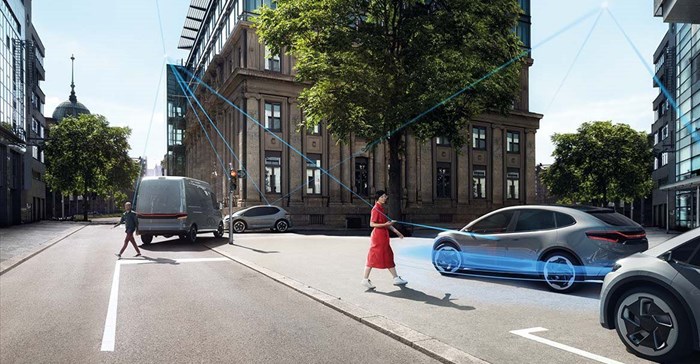
Automotive technology companies like Bosch are betting big on building software defined vehicle platforms. Source: Bosch.
The SDV is a vehicle that’s features and functions are primarily enabled and enhanced through software. This marks a significant departure from the past, where a car’s appeal was largely defined by its hardware performance. Today, software is not just an important aspect of a vehicle, it is becoming the defining factor.
This shift towards software-defined motoring is reshaping the customer experience in profound ways. In its 2022.20 over-the-air (OTA) update, Tesla added the adaptive suspension function that leverages the connected capabilities of its fleet of cars.
This car2X communication technology enables vehicles to identify and report road conditions like potholes to other networked vehicles, which then adjust their air suspension for a smoother ride, notifying drivers of the changes.

In a similar way, the recall at the end of 2023 played out as an OTA update which addressed the regulatory concerns as well as including a stern word for the drivers who were irresponsible. There were also enhancements to the autonomous driving algorithm.
In accordance with a recent recall (campaign #23V-838 for US and #2023-657 for Canada), Tesla is making the following improvements to Autosteer:
• Improved visibility of driver monitoring warning alerts on the touchscreen by increasing the text size and moving the notifications to a more prominent position (Model 3 and Model Y only).
• Added option to activate Autopilot features with a single stalk depression, instead of two, to help simplify activation and disengagement.
• Increased the strictness of driver attentiveness requirements when using Autosteer and approaching traffic lights and stops signs off-highway.
• Introduced a Suspension Policy that will restrict Autosteer usage for one week if improper usage is detected. Improper usage is when you, or another driver of your vehicle, receive five “Forced Autopilot Disengagements.”
You are the driver. As the driver, you must be vigilant to the road, keep your hands on the wheel, and be ready to intervene to maintain safety.
Other car manufacturers are also beginning to take the pivot to SDVs more seriously and are taking ownership of the software development. In an appearance on the Decoder podcast, Volvo CEO Jim Rowan told Nilay Patel about how exciting this phase of motoring is.
“I’m an engineer, and the amount of technology that’s been poured into the industry simultaneously, it just makes for a really appealing place to be right now, just simply as an engineer alone. So, because you’ve got this massive transformation on electrical propulsion from internal combustion, that’s one side, and although the industry talks a lot about electrification, it’s really the easy part. That’s the tip of the iceberg,” he explained.
“The much more profound change that’s happening in the industry is this move to core compute, and the move to core compute technology brings with it silicon and really being able to understand high-computational silicon, software — of course, in all its various strands of software, be that embedded software or mission-critical software or the application layer to your iPhone. Then you’ve got connectivity inside the car.”
Rowan revealed that Volvo’s focus on building software and buying silicon, while also investing in sensor sets, cameras, and lidar technology.
Technology fight
Whereas Elon Musk has always been adamant that Tesla’s camera and radar-based advanced driver assistance systems (ADAS) are a superior solution, Volvo engineers have developed lidar systems to complement its other ADAS sensors.
While fully autonomous vehicles may still be some way off, Rowan believes that the benefits of ADAS will continue to emerge as computational power increases and software improves.
The decision to include lidar technology in their vehicles is driven by a commitment to safety. Lidar, Rowan explained, is currently the only technology capable of detecting objects up to 250m away in pitch darkness. This capability is particularly important given that many serious accidents occur at night when visibility is reduced.

The upcoming Volvo EX90 will be a software defined vehicle.
Electric propulsion has almost eliminated the performance gap between different car brands and customers are now looking to software features as a point of differentiation between a fleet of cars that can accelerate to 100km/h in under five seconds.
Looking ahead, the potential of SDVs is exciting. Imagine a future where new features can be activated individually according to the driver’s needs. Temporary services, features, or apps could be made available at the touch of a button. This opens up new possibilities for contract and pricing models, where new features are provided as a service.












